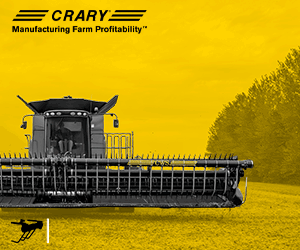High oleic soybeans
MARKET OPPORTUNITIES FOR AN IMPROVED OIL PROFILE
THERE ARE TWO important aspects of soybeans used in food production — oil and protein. Ontario’s growing Identity Preserved (IP) soybean crop is meeting the market demand for protein; however, the same cannot yet be said for oil.
 Although soybean oil is one of the most abundant edible oils in North America, it has not been able to compete successfully against canola oil because of its unstable oil profile. The problem lies in the fact that more than half the content of conventional soybeans is linoleic acid, a relatively unstable fatty acid which tends to go rancid more easily, especially when heated, requiring correction through the process of artificial hydrogenation. Canola contains more than 60 per cent oleic acid, a much more stable fatty acid that is also healthier.
Although soybean oil is one of the most abundant edible oils in North America, it has not been able to compete successfully against canola oil because of its unstable oil profile. The problem lies in the fact that more than half the content of conventional soybeans is linoleic acid, a relatively unstable fatty acid which tends to go rancid more easily, especially when heated, requiring correction through the process of artificial hydrogenation. Canola contains more than 60 per cent oleic acid, a much more stable fatty acid that is also healthier.
Grain Farmers of Ontario, through the Grains Innovation Fund, and DuPont Pioneer are working together to address this problem through the production of Plenish — a high oleic soybean variety.
“What has been done with Plenish beans is shift the balance of the fatty acid profile towards oleic acid,” explains Dave Harwood, who works in product development for DuPont Pioneer. “Plenish produces oleic acid in the neighbourhood of 75 per cent, so it surpasses the oleic content of canola oil.”
Harwood says they have noticed that ever since consumers became aware of trans fats, soybean oil has been losing market share to canola. “So this is a way of making soybean oil more competitive in that edible oil market and that’s a win-win,” he says, “because it makes for a healthier oil supply generally and a more robust oil market for soybeans.”
HEALTHIER OPTION
Crosby Devitt, manager of market development and research for Grain Farmers of Ontario, says the idea of producing a healthier product is appealing, and if consumers catch on, he thinks this could become the new standard.
“There’s some discussion that this could be the new soybean oil profile,” says Devitt. “As it continues to grow, you could see it being more desirable overall for any use compared to the traditional commodity oil.”
Building market demand for Plenish oil has been challenging given the relatively small amount of product that is currently available to show end-use consumers. Devitt notes that farmers don’t want to commit to producing a food grade product without contracts and premiums, but processors can’t confirm product demand since most end-use companies looking to provide lower saturated and trans fats don’t know the technology exists.
“If we, as farmers, expect to get a premium for something, it has to show extra value for everybody,” he says. “The crusher and processor have to be able to sell it for a higher price and whoever is ultimately using the product needs to either save money or make more money out of it.”
Pioneer initiated Ontario-based production trials back in 2010. Between 5,000 and 10,000 acres went into contracted commercial production of two varieties that year to produce oil for a test market. Although they did not have any success attracting the interest of a Canadian-based processor at the time, some big name partners like Bunge and ADM came on board in the U.S. Harwood says the advantage Ontario saw from that experience was the opportunity to test varieties in the field.
“I was in a lot of those fields with growers and we had a pretty good experience,” says Harwood. “Most growers would say the yield was equivalent to what they were growing otherwise.”
One of the most attractive aspects of these varieties for farmers is the agronomic trait packages offered, which not only includes soybean cyst nematode and white mould resistance, but also glyphosate resistance. Harwood explains that while this means farmers still need to handle the harvested product like an IP bean, they don’t have to worry about special treatment during the growing season. Currently, however, Plenish is only available for higher heat unit zones in Ontario.
“We are working on taking the Plenish trait and moving it into existing elite commercial material, into the Group 1 maturity range, but we’re not there yet with commercial materials,” Harwood explained. “The intention is, with time, we would be able to deliver soybeans with high oleic traits across a wide range of maturities.”
MARKET GROWTH
Without a committed market, Pioneer’s commercial trials have been put on hold. But Harwood says plans are underway for more field testing next year in growing regions south of Hamilton to Sarnia, thanks to the work of Nancy Cogger. Cogger is Pioneer’s recently hired Plenish Market Development Consultant and her focus is on increasing market demand in the food service industry.
“Right now, I’ve got two organizations that have agreed to a trial,” she shared. In the same way trials help farmers learn which products might work for them, Cogger says she’s looking to show food manufacturers and retailers how Plenish could benefit them.
As someone who has developed new products and marketing campaigns for restaurant companies for 20 years, she says it’s nice that this is a product that offers a zero trans fat claim. But the restaurant business is a ‘penny profit’ industry she said, so her focus is on dollars and cents. “Three areas in a restaurant account for the majority of costs: rent, food cost, and labour cost,” Cogger explains. “Anything you can do to reduce these is a really good thing.”
Test use of the oil has exposed certain beneficial properties. “Plenish has exceptional oxidative stability, that’s where it’s close to hydrogenated products,” she notes, “and because it’s so stable, it lasts longer and it doesn’t cause a polymer build up in the fryer.”
To a restaurant, this means not having to clean the fryer or replace the oil in it as often, which saves on labour and food costs.
“The other thing that I like is that Plenish is really flexible,” she adds. “You can use it in the fryer, you can use it on the grill or in a pan, and you can use it as a salad dressing ingredient.”
How much cash that frees up in unnecessary inventory depends on the size of the operation. She says one of the things she hopes her coming trials will help her do is establish some reasonable savings ranges that she could share with potential customers. “For example, one chef told me saving two extra days in oil was worth $7,000 per year for him,” she says. “That’s a lot of money in the restaurant business.”
If she can establish similar savings in her trials, she’s convinced restaurants would become very interested. But Cogger adds that buying a Canadian product is also important to chefs and she can’t offer that until farmers get the seed in the ground and a processor crushes the beans here. She’s looking forward to seeing Plenish varieties go in the ground next spring so she can continue her market expansion work.
This project was funded in part through Growing Forward 2 (GF2), a federal-provincial- territorial initiative. The Agricultural Adaptation Council assists in the delivery of GF2 in Ontario. •








